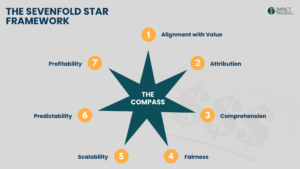For any company, an advantage is a distinctive competency: something you’re great at, and your competition isn’t. It gives you a unique position in the marketplace.
It is possible to have more than one distinctive competency, but in my conversations with companies, more often than not they either haven’t even found one or created one for themselves.
Distinctive competencies are not the same as features. Product features can be copied quickly, whereas distinctive competencies remain unique long-term.
With this in mind, can something like pricing be a unique advantage?
Generally not: most prices can be copied. However, there are two cases which are slightly unique.
Firstly, think about companies that create new pricing models, like Netflix. When they started renting movies with a monthly subscription model, they changed the pricing model status quo for their industry. So in some scenarios – like Netflix – you could argue this is a distinctive competency. However, other pricing model changes (like when airlines first started to charge for checked baggage), are not a distinctive competency. The difference is how easily the change can be copied by others in the marketplace.
Second, let’s look at low prices as a distinctive competency. While it’s certainly a brand statement, the real distinctive competency of companies who price low (like Walmart) is their ability to control costs. Walmart employees focus heavily on driving costs out of the supply chain, so that if they need to lower the price, they can. This way, it’s exceedingly difficult for other companies to compete with Walmart on price.
Pricing is critically important. And key to a company’s success is a company’s willingness to make intentional decisions with regard to pricing. However, pricing itself is probably not your best bet for a distinctive competency or advantage.















